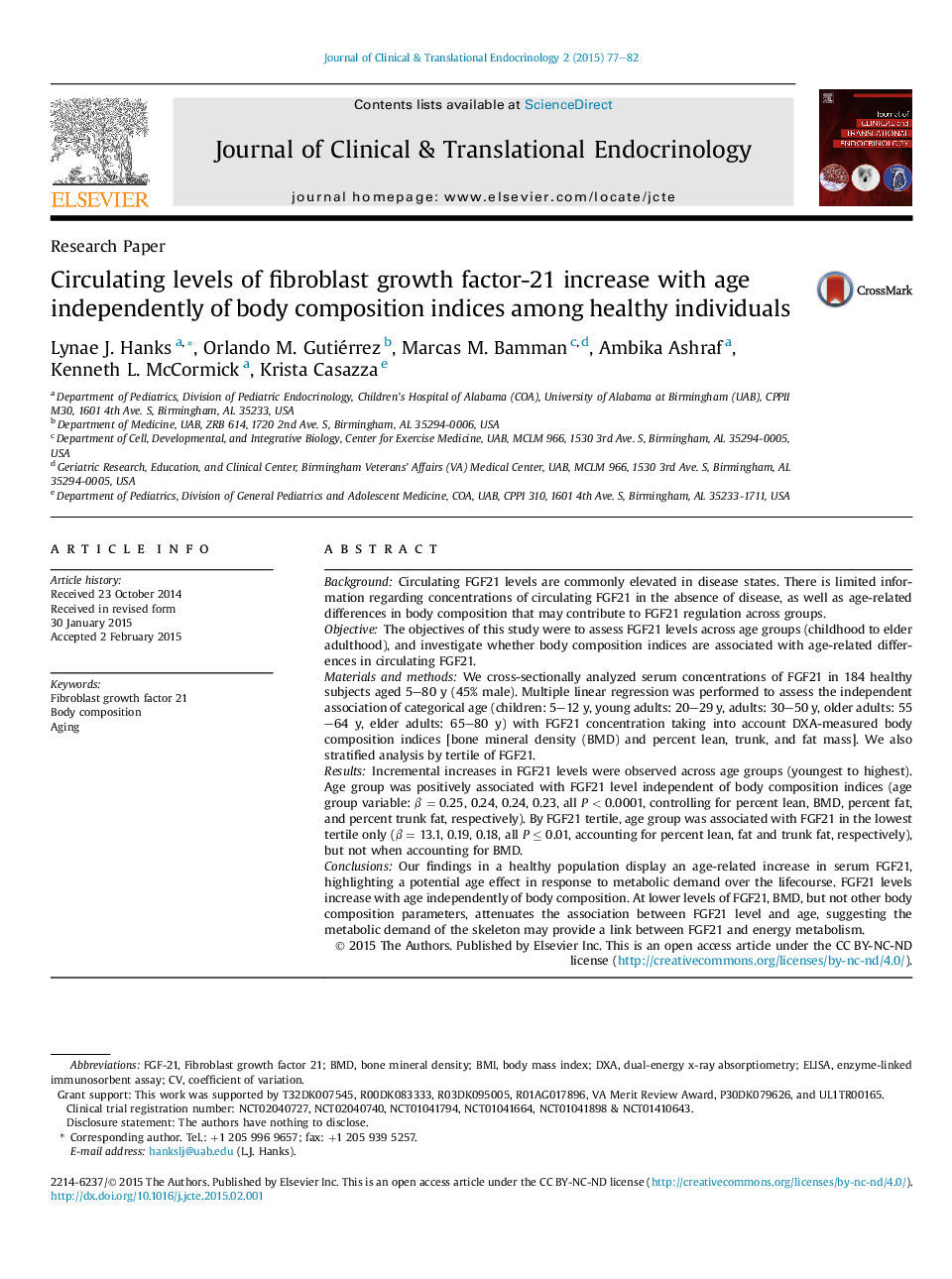| کد مقاله | کد نشریه | سال انتشار | مقاله انگلیسی | نسخه تمام متن |
|---|---|---|---|---|
| 2804013 | 1156832 | 2015 | 6 صفحه PDF | دانلود رایگان |
• We observed an age-related increase in circulating concentrations of FGF21
• The age-related increase in FGF21 is independent of body composition changes
• At lower FGF21 level bone density may explain the association between FGF21 and age
BackgroundCirculating FGF21 levels are commonly elevated in disease states. There is limited information regarding concentrations of circulating FGF21 in the absence of disease, as well as age-related differences in body composition that may contribute to FGF21 regulation across groups.ObjectiveThe objectives of this study were to assess FGF21 levels across age groups (childhood to elder adulthood), and investigate whether body composition indices are associated with age-related differences in circulating FGF21.Materials and methodsWe cross-sectionally analyzed serum concentrations of FGF21 in 184 healthy subjects aged 5–80 y (45% male). Multiple linear regression was performed to assess the independent association of categorical age (children: 5–12 y, young adults: 20–29 y, adults: 30–50 y, older adults: 55–64 y, elder adults: 65–80 y) with FGF21 concentration taking into account DXA-measured body composition indices [bone mineral density (BMD) and percent lean, trunk, and fat mass]. We also stratified analysis by tertile of FGF21.ResultsIncremental increases in FGF21 levels were observed across age groups (youngest to highest). Age group was positively associated with FGF21 level independent of body composition indices (age group variable: β = 0.25, 0.24, 0.24, 0.23, all P < 0.0001, controlling for percent lean, BMD, percent fat, and percent trunk fat, respectively). By FGF21 tertile, age group was associated with FGF21 in the lowest tertile only (β = 13.1, 0.19, 0.18, all P ≤ 0.01, accounting for percent lean, fat and trunk fat, respectively), but not when accounting for BMD.ConclusionsOur findings in a healthy population display an age-related increase in serum FGF21, highlighting a potential age effect in response to metabolic demand over the lifecourse. FGF21 levels increase with age independently of body composition. At lower levels of FGF21, BMD, but not other body composition parameters, attenuates the association between FGF21 level and age, suggesting the metabolic demand of the skeleton may provide a link between FGF21 and energy metabolism.
Journal: Journal of Clinical & Translational Endocrinology - Volume 2, Issue 2, June 2015, Pages 77–82
